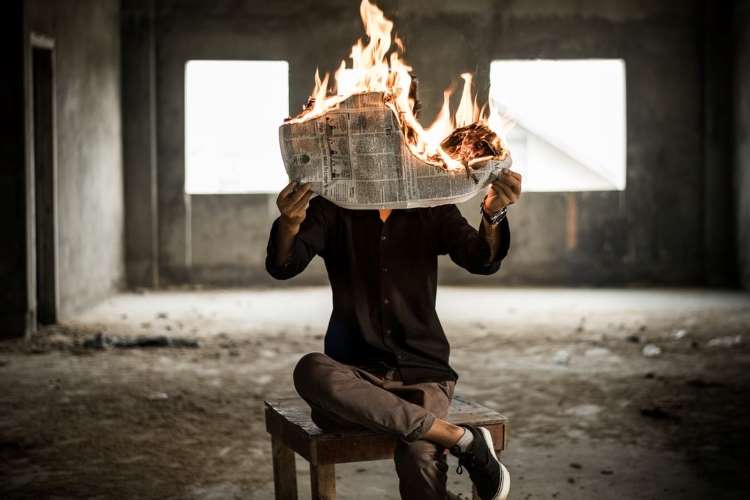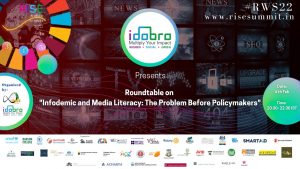
Media literacy practice’s attention over the past two years has been hijacked by the shock and awe of two events — the Covid-19 pandemic and the discourse on fake news allegations before the 2020 US election. In 2019, the US tabled a legislation as lawmakers realised not merely the importance, but the urgency of the need for media literacy. So rather than a public educational need, media literacy is seen as a pedagogic solution to the pressing problem of an ‘infodemic’ as the World Health Organization (WHO) termed it. Let us examine how relevant a media literacy policy would be for India.
In reality, the pandemic has merely revealed or reiterated how easy it is for social media discourse to not only create alternative truths, but also expose hidden truths. In India, closed social networks such as WhatsApp groups have been peddling misinformation and the government has made gestures to hold these big tech corporations accountable for it. But are we missing the wood for the trees? Will government control help? The following example might help situate the issue.
READ I Summit for Democracy owes us an explanation

In recent years, populist political leaders around the world have spotlighted how seemingly simple it is for political discourse to shine the light on and galvanize archetypal belief systems and amplify social biases. Sometimes, either encouraged by or despite even relatively reasonable political rhetoric, dangerous forms of dog whistling have pervaded closed social networks, which are then amplified in some way on more publicly accessible social media and even mainstream media.
In 1989, more than 1,000 people were killed in Bihar. They were buried and camouflaged by cauliflower patches. Media reports say that users of an extreme-right closed social network have used the humble-enough vegetable to connote it in that context. These reports say that borrowing from the neo-Nazi ecosystem, such groups are trolling even right-wing politicians—so ultra-right are they. But as I have observed in the previous paragraph, the message may not stay within the confines of the closed group.
Media literacy and social media
On more open platforms, virality is a result of shock and awe, and virality is agnostic to morality or even opposed to the code of ethics that journalists might follow. Then, as new narratives are fed, mainstream media picks up anything remotely viral, and thus the trap is laid by a combination of amplification-hopefuls and media production imperatives. Media literacy has not been able to resolve the social dilemma between free speech and ‘fair speech’.
Besides, the claim that fake news is an all-powerful influencer of unsuspecting ignorant masses is itself dubious. Hate speech, especially on social media, has gone through the roof, and this is one front where media literacy has not really worked—perhaps because we’re barking up the wrong tree. Media literacy has been ineffective against hate speech partly due to its excessive focus on misinformation and partly due to the presumption of public innocence. Trump’s electoral victory in 2016 was often blamed on fake news. New research suggests that the power of fake news to expand the echo chamber is at least overrated and even unlikely.
This is where media scholar John Fiske might collide with Noam Chomsky: Fiske suspects the media consumer is already literate, while Chomsky stands by the mass manipulability of the media. WHO defines ‘infodemic’ as “an overabundance of information—some accurate and some not—that makes it hard for people to find trustworthy sources and reliable guidance when they need it”. To its credit, the WHO does not make an assumption of public ignorance but does assume the public’s interest in facts.
The WHO does not directly acknowledge that the idea of misinformation may be manipulated or hijacked by a dominant narrative. Illinois became one of the first US states to pass a media literacy legislation, mandating state high schools to teach media literacy starting this year. One argument in the debates that followed is that an apolitical approach to media literacy’s curricula is almost impossible. The bottom line is that if media literacy presumes a prevalence of media illiteracy¸ it will be in for a bit of a surprise.
Let us map that scenario onto the Indian environment. We may wonder whether any of these arguments are valid for, say, rural India, where access is limited to mainstream media but far more enabled to social media by way of mobile devices. Unlike in the US, there is no public policy for media literacy in India, although the government considers itself a media literacy proponent, stating that its daily Covid-19 update bulletins on television is one method it has adopted.
Whether India really needs a public policy or not is up in the air. We may all agree that the Indian environment calls for a tweaking of media literacy to include community intervention rather than routinely introducing the subject at schools. Several schools have adopted a technological application of media literacy, empowering their students with the basics of creating messages. That’s as politically agnostic as you can get. Numerous independent organizations are already working tirelessly at building curricula, delivering media literacy lessons to the public at large and defining the curricula either in standardized or adapted ways.
But if a law or a policy is warranted, what shape must it take? There are rich possibilities around this question. The upcoming Rise World Summit 2022 will host a roundtable on the subject on February 4 at 8:30 pm IST. Registration is free here.
(Shashidhar Nanjundaiah started and headed private media colleges in India. He has served on the jury of scholarly conferences on media literacy, and lectures and conducts workshops and webinars on media literacy. He lives in Illinois, USA and Bangalore.)
